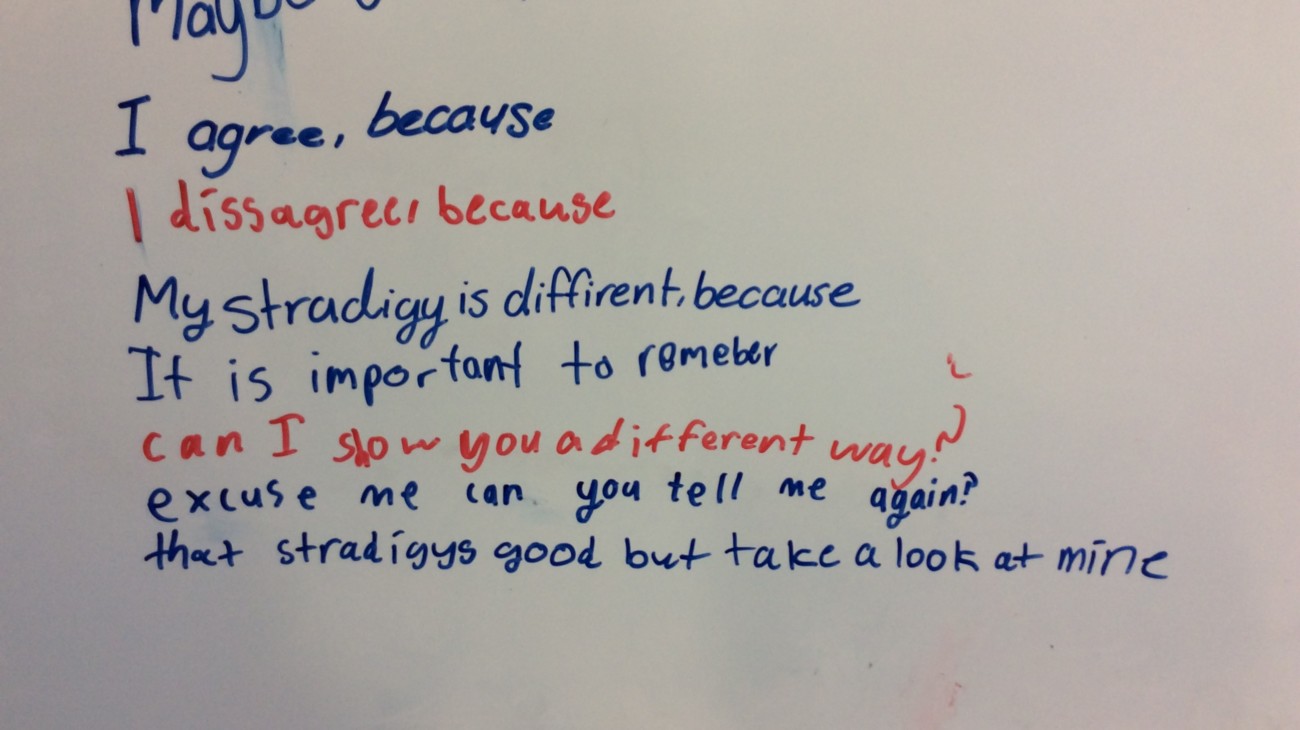Posted Wednesday, 28 August 2019
What do you see? How many?
Scott and Ryan use unit chats as quick and engaging ways to warm-up a maths lesson.
Lisa talks about promoting equality and respect between the students so that the groups could work more effectively.

Hello everyone,
My name is Lisa Tatham and I am a Year 5 teacher at Treendale Primary School. This year I have been participating in the Alcoa Maths Enrichment Program: Champions of Maths (ACoM). One of my goals at the start of this program was to help my students improve their maths application and problem solving skills. I knew I had some talented mathematicians in the class so I wanted them to be able to share their knowledge and skills with others as well as apply their understandings in a variety of situations.
My first lesson, which was observed by Shyam Drury and Kate Archibald as part of the program, involved students working in groups to cooperatively build a fraction number line. It was immediately evident that some students wanted to take over the problem, skipping straight to the answer without letting others have any input. Other students were happy to sit back and watch, even if they did have valuable information to contribute.
Following discussions with Shyam and Kate, I realised my teaching focus needed to be on promoting equality and respect between the students so that the groups could work more effectively.
I began by defining the problem with my class. We discussed the purpose of group work and why we needed to share ideas during maths lessons so that we could learn from each other. I also stressed that the process of solving a problem was just as important as arriving at an answer. I wanted them to be able to explain the strategies that they used and consider alternative methods so they could develop flexible and critical thinking.
Once the class understood why we needed to work together, we focussed on what respectful discussion looked and sounded like. We brainstormed some things that they could say to each other, writing them on a whiteboard which stayed on display so that we could refer back to it during our lessons. Although I had a list of sentence stems they could use, it was important that the words came from the students so that they had ownership and would feel confident using them during their discussions.
My sentence stems:
I know the problem is asking …. because…
Something that is important to remember is …
I think that makes sense/doesn’t make sense because…
My strategy is the same/ different than yours because…
I want to add to what you said about…
See the photo of the students’ ideas.
It has been rewarding to see so many students now engaging in problem solving and enjoying the challenge, without being too fearful or overwhelmed to speak up in front of their peers. This was highlighted in two ways, firstly when one of the quietest students, who often found the busyness of these sessions daunting, had the confidence to stand up and explain his strategy to the entire class, with three adults also watching.
Secondly, during the third classroom visit by Shyam and Kate, a student quite candidly said that they did not understand what the term ‘sum’ meant. Rather than being met by laughter or groans from the class, four other people agreed that they did not know either, leading to a helpful discussion about the term and what it meant in the context of the problem. It was during our post-lesson discussion that Shyam pointed out what a significant moment that was for my class. It showed that they had accepted that asking questions and making mistakes were part of learning and that there was no shame in doing so.
To see what a difference the Champions of Maths program has made in just one term fills me with hope and excitement for what we can achieve over the course of a year. I hope you too are inspired to persist with group work if it is a challenge in your room, as the benefits for both teacher and students make it so worthwhile.
The next time we had a problem solving lesson, we began by revising our sentence stems, with students choosing one or two that they could use during their discussion. Then I used popsticks with students’ names written on them to randomly form groups of four. This process of visible grouping helped to foster respect and cooperation because the students knew that there was no ‘good or ‘bad’ maths group. Each time we did problem solving, the groups changed and they accepted the challenge of working with different people, while having the sentence stems to scaffold them in their discussions. We also used these sentence stems during our whole class reflection. When a student explained their strategy to the class, others could respond by saying “I agree although I solved it a different way”, “can I show you how I worked it out?” or “I’m confused, can you explain that again?”
At the end of the lesson, students completed an entry in their maths journal using the Book Creator app on their iPads. Part of their reflection involved considering the sentence stems that they used.
Would you like to continue a discussion on this topic with other educators? Join our Facebook group!
If you are interested in joining the Alcoa Maths Enrichment Program please fill out the enquiry form below and a Scitech representative will be in touch with you.
Upon clicking the "Book Now" or "Buy Gift Card" buttons a new window will open prompting contact information and payment details.